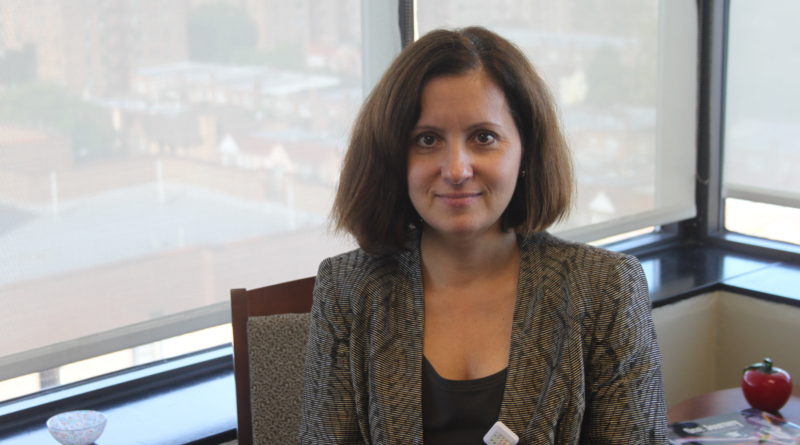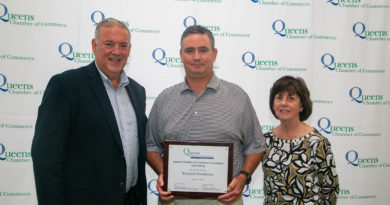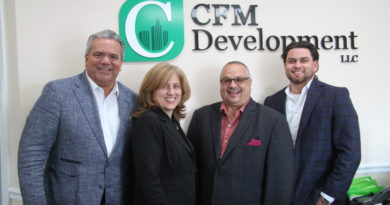Evolving health care industry in Queens
By Benjamin Fang
From the repeated efforts to repeal and replace Obamacare to the rising support for a single-payer system, health care is the talk of the town. With more than 2.3 million residents in Queens, and thousands of businesses that rely on healthy employees, it’s essential that everyone knows about the latest changes in the industry.
In July, the Queens Chamber of Commerce’s Health and Wellness Committee met for the first time. Led by Susan Browning, executive director of Long Island Jewish (LIJ) Forest Hills, and Evangeline Rosado-Tripp, executive director of the Medical Society of Queens County, the committee seeks to provide a forum where business leaders can learn about the various aspects of the health care industry.
“Health care is integral to a community,” Browning said. “ If you have a strong business sector, it helps to support a strong health care sector, and vice versa.”
Browning, who previously served in senior administrative roles in hospitals in Brooklyn and Staten Island, said there are many health challenges in Queens. The diversity of the borough, one of its major assets, presents complexities. Different diseases and afflictions affect different socioeconomic and ethnic groups in myriad ways.
LIJ Forest Hills conducts community health needs assessments, then prioritizes service developments and growth based on the data.
“As a health care provider, one that treats the entire community, we need to be looking at how we can really serve the broadest group of the population,” Browning said. “We are open to the entire community, regardless of ability to pay.”
For patients who don’t have insurance, the hospital tries to be flexible with fee schedules, deep discounts and other methods. In some situations, patients don’t end up paying at all, but they are still treated and stabilized.
With the number of uninsured patients still high in Queens, health care leaders are watching closely the future of the Affordable Care Act in Washington. After several failed attempts by Republicans to repeal and replace Obamacare, the health care law is still under fire.
Under the latest failed effort, called the “Graham-Cassidy” bill, funding would have been converted to “block grants,” which would allow individual states to decide how to spend on health care, Browning said. That change would have primarily affected the Medicaid system here.
New York state has a “generous” Medicaid program, funded by contributions from the federal government, the state and localities. Under legislation like the Graham-Cassidy bill, federal funding for Medicaid would “certainly go down over time,” Browning said.
That would leave New York with one of two options: curtail benefits or put more money into Medicaid to maintain benefits. According to Browning, Governor Andrew Cuomo has publicly stated he will not cut benefits, leaving him with the difficult task of coming up with a solution on funding.
“If there is a budget at a state level and a bigger piece of that budget needs to go toward health care, there has to be a cut somewhere else,” she said. “These are the difficult decisions that will be made at a state level.”
While the fight over Obamacare continues, another health care proposal is on the horizon. As proposed during his 2016 presidential campaign, Senator Bernie Sanders rolled out his “Medicare For All” legislation, which is gaining traction among Senate Democrats.
In Albany, the State Senate is also considering a single-payer health care bill. It has passed the Democratically controlled Assembly for the third time, but still lacks sufficient support in the State Senate, led by Republicans and a faction of independent Democrats.
But if it ever musters enough votes to pass the state legislature, Cuomo said on the radio last month that he would sign it into law. Browning noted that it has also gained the support of roughly 60 percent of physicians in the American Medical Association, which she said was fascinating.
“It absolutely is feasible,” she said. “Certainly, there would be more federal funding that would be required, but there would be savings elsewhere. So it would be really how the savings get distributed in order to support the program.”
Right now, Browning said, corporations spend a lot of money on purchasing private insurance. Though the framework hasn’t been worked out, she said it’s conceivable that that money could be redirected toward the federal government to provide insurance for employees.
“A big part of the argument is that the most efficient sector of the insurance industry is actually Medicare,” she said. “Medicare is a highly efficient program.”
According to Browning, data show that Medicare spends less on administrative back office functions than private insurance companies. It spends more on clinical care.
“It doesn’t mean everybody likes it,” Browning added. “I think there are some pockets of the population that still feels they don’t want the government to provide us with insurance.”
It’s not, by any means, a new idea. Other countries like Canada have socialized medicine, and in many places, it’s been highly successful, she said.
“But it does require some hard choices,” Browning said. “Many people in those countries still choose to have private insurance because they don’t want to be subject to those hard choices.”
Whether or not Obamacare is repealed, or single payer is enacted, is still up in the air. What Browning does know is that the health care industry in Queens is changing. In the last year-and-a-half, four hospitals have closed in the borough.
What has transpired in its place is an expansion of ambulatory care, and a larger focus on how to manage patient health before they ever enter a hospital and provide the proper screenings.
As a health system executive, Browning said the goal is to bring together all forms of care, from primary care and specialty care to diagnostic and screening and hospice care.
“You really want to look at whether you were able to avoid that hospitalization, from a public health perspective,” she said. “The more that we can do that, the stronger the community is.”
Looking ahead, the Queens Chambers’ Health and Wellness Committee will meet in November at the Medical Society of Queens County in Forest Hills. The next step, Browning said, is forming well-structured subcommittees to gather more participation in their activities. She added that facilitating these discussions is part of the process to better understand community health needs.
“We are health care providers, certainly, but at a more global level, we also want to really change the public health of the community and move further upstream in terms of how people are making decisions in health care,” she said. “By providing this level of education and really gathering the input on a grassroots level, we feel we can much more effectively plan for services and be responsive to the needs of the community.”




